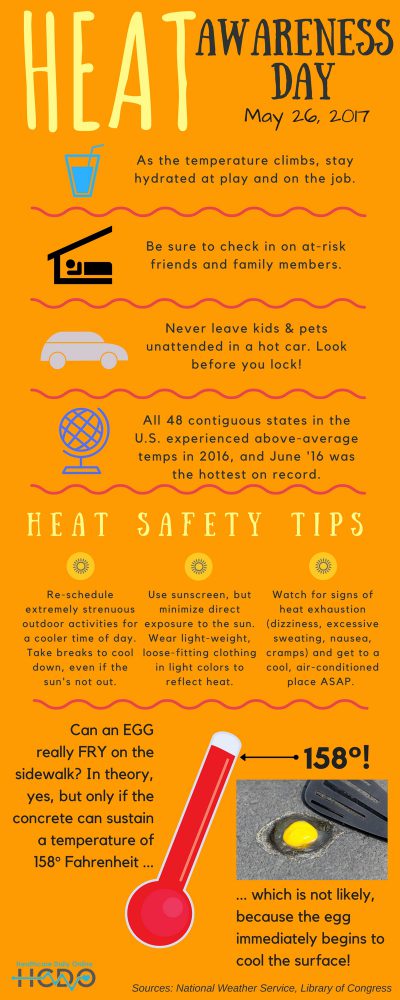
Climate change did not create hot summers. In the Northern Hemisphere, as far as climate scientists know, the weather always has taken a turn for the significantly warmer during those months when the Earth’s upper half was tilted toward the sun.
Yet, it’s getting hotter, and the data are indisputable. The year between May 2016-April 2017 was the warmest 12-month period on record in the United States, according to the National Oceanic and Atmospheric Administration (NOAA). That’s in keeping with the developing pattern of hotter temperatures in the U.S. — the five years between May 2012 and April 2017 was the warmest 60-month period on record, according to NOAA.
In short — it’s hotter every day. Extreme heat can be deadly. According to the U.S. Occupational Safety and Health Administration (OSHA), 2,630 American workers suffered heat-related illness and 18 workers were killed by heat stroke in 2014 (the most recent year data are available).
 The American Academy of Pediatrics recommends that parents guard against heat-related illness such as heat cramps, heat exhaustion, dehydration and heat stroke by watching for the following symptoms in their kids:
The American Academy of Pediatrics recommends that parents guard against heat-related illness such as heat cramps, heat exhaustion, dehydration and heat stroke by watching for the following symptoms in their kids:
- Feeling faint
- Extreme tiredness
- Headache
- Fever
- Extreme thirst
- Nausea
- Vomiting
- Not urinating for hours
- Shortness of breath
- Tingling or numbness
- Muscle spasms or aches
While summer doesn’t officially begin in the U.S. until June 20, the upcoming Memorial Day Weekend is the traditional, unofficial summer kickoff around the country. Now is the time to remember that extreme heat can be dangerous.
NOAA’s Heat Awareness Day serves as a reminder to respect the warmer weather and take care of yourself in the sun. The adjacent infographic provides tips and reminders to help keep you and your loved ones safer this summer.








